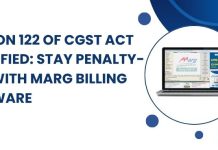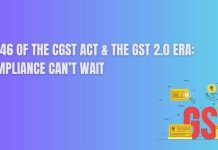The introduction of the Goods and Services Tax (GST) brought about a significant change in the way businesses are taxed in India. Under GST, a taxpayer is allowed to claim Input Tax Credit (ITC) on the tax paid on their purchases. ITC is a mechanism that allows businesses to reduce their tax liability by offsetting the tax paid on inputs against the tax liability on output. However, in certain cases, the ITC claimed by a taxpayer needs to be reversed. In this blog, we will discuss the concept of ITC reversal in GST.
What is ITC Reversal?
ITC reversal is the process of reversing the Input Tax Credit claimed by a taxpayer in their GST return. The reversal of ITC can happen for various reasons, such as:
- Non-payment of the supplier: If the supplier does not pay the tax collected from the recipient to the government, the ITC claimed by the recipient needs to be reversed.
- Exempt supplies: If a taxpayer makes exempt supplies, such as healthcare services or educational services, the ITC claimed on inputs used for such supplies needs to be reversed.
- Personal use: If the goods or services purchased by a taxpayer are used for personal consumption or non-business purposes, the ITC claimed on such purchases needs to be reversed.
- Blocked credits: The government has specified certain goods and services on which ITC cannot be claimed. If a taxpayer claims ITC on such goods and services, it needs to be reversed.
- Reverse charge mechanism: If a taxpayer is liable to pay tax under the reverse charge mechanism, the ITC claimed on the tax paid needs to be reversed.
The above list is not exhaustive, and there may be other situations where ITC reversal may be required.
How to Reversal ITC in GST?
The ITC reversal needs to be done in the GST return filed by the taxpayer for the relevant tax period. The amount of ITC to be reversed needs to be mentioned in Table 4 of Form GSTR-3B. The taxpayer needs to calculate the amount of ITC to be reversed and pay the same along with their tax liability for the relevant tax period. The ITC reversal needs to be done on a monthly basis.
Impact of ITC Reversal on Tax Liability
The reversal of ITC increases the tax liability of a taxpayer for the relevant tax period. This is because the tax liability is calculated after reducing the ITC claimed from the tax collected. If ITC is reversed, the tax liability increases, and the taxpayer needs to pay the additional tax.
Conclusion
ITC reversal is an important concept under GST that needs to be understood by every taxpayer. It is important to identify the situations where ITC reversal is required and comply with the relevant provisions of the law. Non-compliance can lead to penalties and interest, and it is, therefore, essential to be aware of the ITC reversal rules and regulations.
Read more useful content:
- GST Rules and Regulations in India
- GST Software
- GST Billing Software
- Billing Software
- GST on diamonds
- Making GST Payments
- GST E-invoice
Frequently Asked Questions (FAQs)
Q. What is ITC reversal in GST?
A. ITC reversal is the process of reversing the Input Tax Credit claimed by a taxpayer in their GST return due to certain circumstances such as non-payment of the supplier, exempt supplies, personal use, blocked credits, or reverse charge mechanism.
Q. What are the situations where ITC reversal is required?
A. ITC reversal is required in situations such as non-payment of the supplier, exempt supplies, personal use, blocked credits, or reverse charge mechanism.
Q. How is ITC reversal done in GST?
A. ITC reversal needs to be done in the GST return filed by the taxpayer for the relevant tax period. The amount of ITC to be reversed needs to be mentioned in Table 4 of Form GSTR-3B. The taxpayer needs to calculate the amount of ITC to be reversed and pay the same along with their tax liability for the relevant tax period.
Q. What is the impact of ITC reversal on tax liability?
A. The reversal of ITC increases the tax liability of a taxpayer for the relevant tax period. This is because the tax liability is calculated after reducing the ITC claimed from the tax collected. If ITC is reversed, the tax liability increases, and the taxpayer needs to pay the additional tax.
Q. Can ITC reversal be avoided?
A. ITC reversal can be avoided by ensuring compliance with the provisions of the law. Taxpayers need to ensure that they purchase goods and services only from registered suppliers who comply with the law and pay their taxes on time. They also need to ensure that they use the goods and services purchased for business purposes and do not make exempt supplies or use them for personal use.
Q. What are the penalties for non-compliance with ITC reversal rules?
A. Non-compliance with ITC reversal rules can lead to penalties and interest. The penalty for non-payment or short payment of tax is 10% of the tax amount or a minimum of Rs. 10,000. Interest is charged at the rate of 18% per annum on the amount of tax payable.
Q. What should be done if an error is made while reversing ITC?
A. If an error is made while reversing ITC, the taxpayer can rectify the error in the next GST return filed. They can claim the correct amount of ITC in the subsequent return. However, interest may be charged on the amount of ITC claimed in excess in the earlier return.
Q. Is ITC reversal applicable to all taxpayers registered under GST?
A. Yes, ITC reversal is applicable to all taxpayers registered under GST, except for taxpayers registered under the composition scheme.






